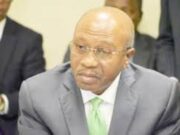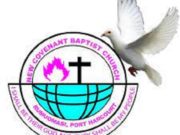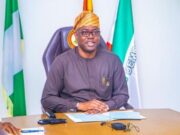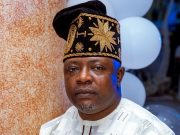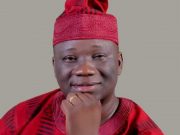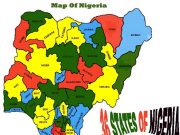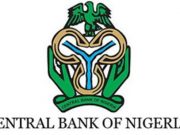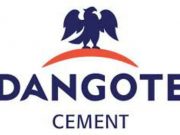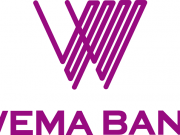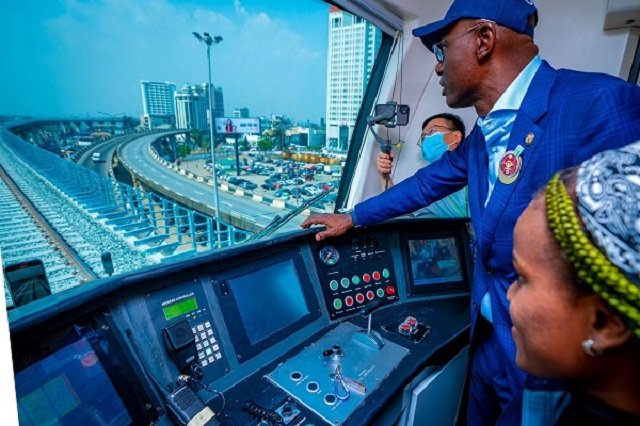Lagos State, under the leadership of Governor Babajide Sanwo-Olu has made history following the completion of infrastructure work of the Blue Rail Line Project.
Governor Sanwo-Olu, who took the first ride, along with Deputy Governor Obafemi Hamzat, House of Assembly Speaker Mudashiru Obasa and other government officials, also disclosed that the project will be commissioned in January next year.
The train ride from Iganmu, the National Theatre Station, took barely 15 minutes. It started by 1.34pm and ended by 2.02pm.
The train, an airconditioned rail car, one of the three that would be used on that corridor, came back to the National Theatre Station.
Economic experts hailed the project, saying that it will accelerate growth and enhance transportation in the Centre of Excellence.
Lagos accounts for more than 30 per cent of Nigeria’s Gross Domestic Products (GDP). It is the nation’s economic nerve centre, home to some 10 per cent of the country’s population. Lagos has the largest concentration of corporate activities in Nigeria, including the operational head offices of the major financial institutions, manufacturers and services providers.
Sanwo-Olu said with the completion of construction, the stage is set for the official commissioning of the legacy project, the first, wholly funded train project by a sub-national government in Africa, in January, by President Muhammadu Buhari.
Former President, Nigeria Institute of Building (NIOB), Mr Kunle Awobodu said the Blue Rail Project would drive economic growth, noting that transportation is key to economic development.
He said artisans who live downtown and work in high-brow areas of Lekki, Ikoyi and Victoria Island will be best served as they come from distant areas to work in those upscale areas.
According to him, the implication of high cost of transportation is that workers are delayed and do not put in the maximum eight hours required for them to work because of delays.
He said the cost of transportation and the delay on the road have made workers to devise many survival measures, including abandoning their families, sleeping at workplaces and construction sites, with many unhealthy implications.
Awobodu said the train service will also afford car owners the opportunity to park their cars at designated places and take a train ride, thus reducing cost and stress.
Director, Centre For The Promotion Of Private Enterprise, (CPPE), Dr Muda Yusuf said transportation was critical to connectivity in an economy as connectivity drives the tempo and velocity of economic activities.
He said the rail project would have a phenomenal impact on economic activities, adding that there will be a knock-on effects on the wider Nigerian economy.
“The project is even more significant because it has prioritized connectivity to the densely populated locations in the state,” Yusuf said.
The former Director-General of Lagos Chamber of Commerce and Industry (LCCI) expressed optimism that the rail connection would be expanded to cover other locations where traffic congestion remains a nightmare, including the Lekki corridor.
“The state government deserves commendation for its unwavering commitment to the rail project,” Yusuf said.
The historic train rid yesterday came 41 years after the metroline was first conceived in the state of Aquatic Splendor by Second Republic Governor Lateef Jakande defunct Unity Party of Nigeria (UPN). But, it was aborted in 1983.
Sanwo-Olu said President Muhammadu Buhari will perform the ground breaking ceremony of the Phase II of the Blue Line Rail as well as the 37 kilometres Red Rail line, which would run from Oyingbo to Agbado, which was also the phase one of the Red Line project.
“Let me make it expressly clear that Mr President Muhammadu Buhari has graciously accepted to come and commission the Blue Rail in January and we would ensure that he also performs the ground breaking of the second phase of the project because we do not want to waste further time on the project.”
While the Blue Line runs on electricity, which would be supplied by an Independent Power Project (IPP), as part of efforts by the state government towards cleaner energy, the Red Rail Line would run on diesel.
Sanwo-Olu was accompanied to the event by Deputy Governor Dr. Obafemi Hamzat, whose father, the late Olatunji Hamzat, was the Commissioner of Transportation.
Sanwo-Olu was part of the team that conceptualised the project under Asiwaju Bola Ahmed Tinubu, at the dawn of the Fourth Republic. He also was in the cabinet during the early stage of the construction under the Babatunde Fashola administration. The governor saluted the resilience of members of his team for the actualization of the Blue Line, which has gone through several challenges.
He extolled the visionary doggedness of Tinubu, who he described as the father of modern Lagos. “Lagos that Asiwaju Bola Ahmed Tinubu inherited is a struggling metropolis burdened by multiple challenges, for which he developed a road map which his successors have continued to build on,” he said.
The completion of the Blue Line is a strong testimony of the commitment of the government to continue to build on the legacies of the past administrations and the pioneering vision of Tinubu.
He said: “The first phase of the 13-kilometre Blue Line which stretches from Marina to Mile 2, has five Stations stretch, out of the total of 27km that is the entire Blue Line, and which will run from Marina to Okokomaiko.”
According to him, the three train sets needed to run operation on the corridor is already on ground.
Sanwo-Olu praised Fashola who completed four stations at Mile 2, Suru Alaba, Orile-Iganmu and National Theatre, and commenced work on the elevated section of the track up to Ijora.
“I want to also place on record the role played by the Central Bank of Nigeria (CBN) under the leadership of Mr. Godwin Emefiele. The CBN’s Differentiated Cash Reserves Requirement (DCRR) made it possible for three banks, Fidelity Bank Plc, Sterling Bank Plc and Access Bank Plc to pool resources together to provide credit financing for the completion of this first phase of the Blue Line. I am grateful to the leadership of the three banks for believing in us.”
Commissioner for Transportation Dr Frederic Oladeinde said the infrastructure ceremony is a confirmation of the governor’s commitment to public transportation in line with the administration’s THEMES Agenda, which has Transportation as its first pillar.
“Thank you for sticking to your promise to Lagosians to complete the infrastructure for the first phase of the Blue Rail in the last quarter of the year. Lagosians now trust you that you are a man of integrity,” Oladeinde said.
LAMATA’s Managing Director Abimbola Akinajo, an engineer described the completion of infrastructure as a demonstration of the governor’s audacious courage to the intermodal connectivity in line with the strategic transport masterplan.
Under the masterplan, Lagos State would be served by six metro line rails, all of which are colour coded: The Blue, (which serves Marina to Okokomaiko) the Red Line, known as the North-South Rail Line, (which runs from Agbado to Marina, with first phase, Agbado to Oyingbo nearing completion), the Green Line (from Marina to Lekki) Purple Line (Redemption Camp to Ojo), Yellow Line (Ota to National Theatre), Orange Line (Ikeja to Agbowa), one mono rail from Ikoyi and Vitoria Island.
Akinajo said the governor had to use a window of funding by the Central Bank of Nigeria, which pooled three banks – Access Bank Plc, Fidelity Bank Plc and and Sterling Bank Plc – together to fund the completion of the first phase of the Blue Line infrastructure 13 of the 27-kilometre stretch.
She said studies carried out by her office showed that the Marina to Mile 2 corridor would carry 250,000 passenger traffic daily, and when the second phase is eventually completed, the corridor would be able to cater to 500,000 passenger traffic daily.
She said the train is calibrated to run on 80km/per hour and would drastically reduce travel time which would have a positive impact on productivity of residents of the state.
Akinajo said thousands of jobs would be created directly and indirectly when the project fully begins in January. She said e-payment integration is almost completed and the state’s Cowry Card, which is already being used on the buses and waterways, would be introduced on the train.
Akinajo, however, disclosed that the government is yet to arrive at a fare for the train.
She said: “What we can say for now is that the fare, when decision on that is eventually taken would be affordable.”
Chairman CCECC Nigeria Ltd., Mr Zhang Zhichen said the Chinese corporation is happy to be signing off on the project 13 years after the ground breaking of the project.
“Over the past years, we overcame various challenges such as funding shortages, hiking material prices and the COVID-19 pandemic.
China’s Consul General Chu Maoming said the Blue Line is another testimony of the very strong bilateral relationship between Nigeria and China, adding that his country would continue to support Nigeria in its attempt to provide landmark infrastructure that could transform the lives of Nigerians.
He commended the Lagos State Government for its commitment to ensuring the completion of the Blue and Red Lines by the Chinese expert team.
Credit: thenationonlineng.net












